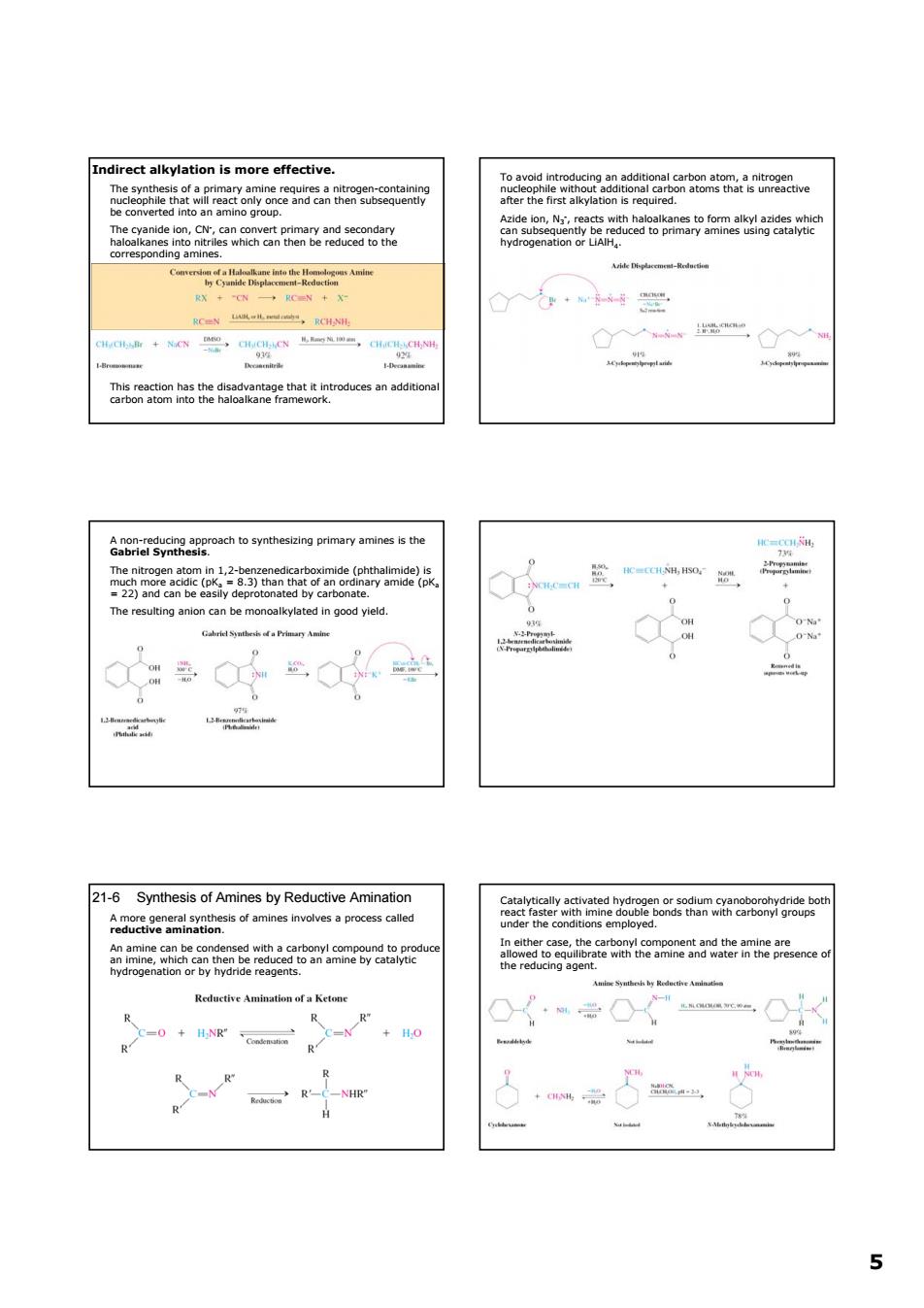正在加载图片...

Indirect alkylation is more effective. c RX arnaomhstheeoiea29ehetktoducsandaic &a8negya8eroacho5 出 Te resungnonabemonalkylated ind yleld. 21-6 Synthesis of Amines by Reductive Amination Redactive Amination ofa Kctone 5 5 Indirect alkylation is more effective. The synthesis of a primary amine requires a nitrogen-containing nucleophile that will react only once and can then subsequently be converted into an amino group. The cyanide ion, CN- , can convert primary and secondary haloalkanes into nitriles which can then be reduced to the corresponding amines. This reaction has the disadvantage that it introduces an additional carbon atom into the haloalkane framework. To avoid introducing an additional carbon atom, a nitrogen nucleophile without additional carbon atoms that is unreactive after the first alkylation is required. Azide ion, N3 - , reacts with haloalkanes to form alkyl azides which can subsequently be reduced to primary amines using catalytic hydrogenation or LiAlH4. A non-reducing approach to synthesizing primary amines is the Gabriel Synthesis. The nitrogen atom in 1,2-benzenedicarboximide (phthalimide) is much more acidic (pKa = 8.3) than that of an ordinary amide (pKa = 22) and can be easily deprotonated by carbonate. The resulting anion can be monoalkylated in good yield. 21-6 Synthesis of Amines by Reductive Amination A more general synthesis of amines involves a process called reductive amination. An amine can be condensed with a carbonyl compound to produce an imine, which can then be reduced to an amine by catalytic hydrogenation or by hydride reagents. Catalytically activated hydrogen or sodium cyanoborohydride both react faster with imine double bonds than with carbonyl groups under the conditions employed. In either case, the carbonyl component and the amine are allowed to equilibrate with the amine and water in the presence of the reducing agent